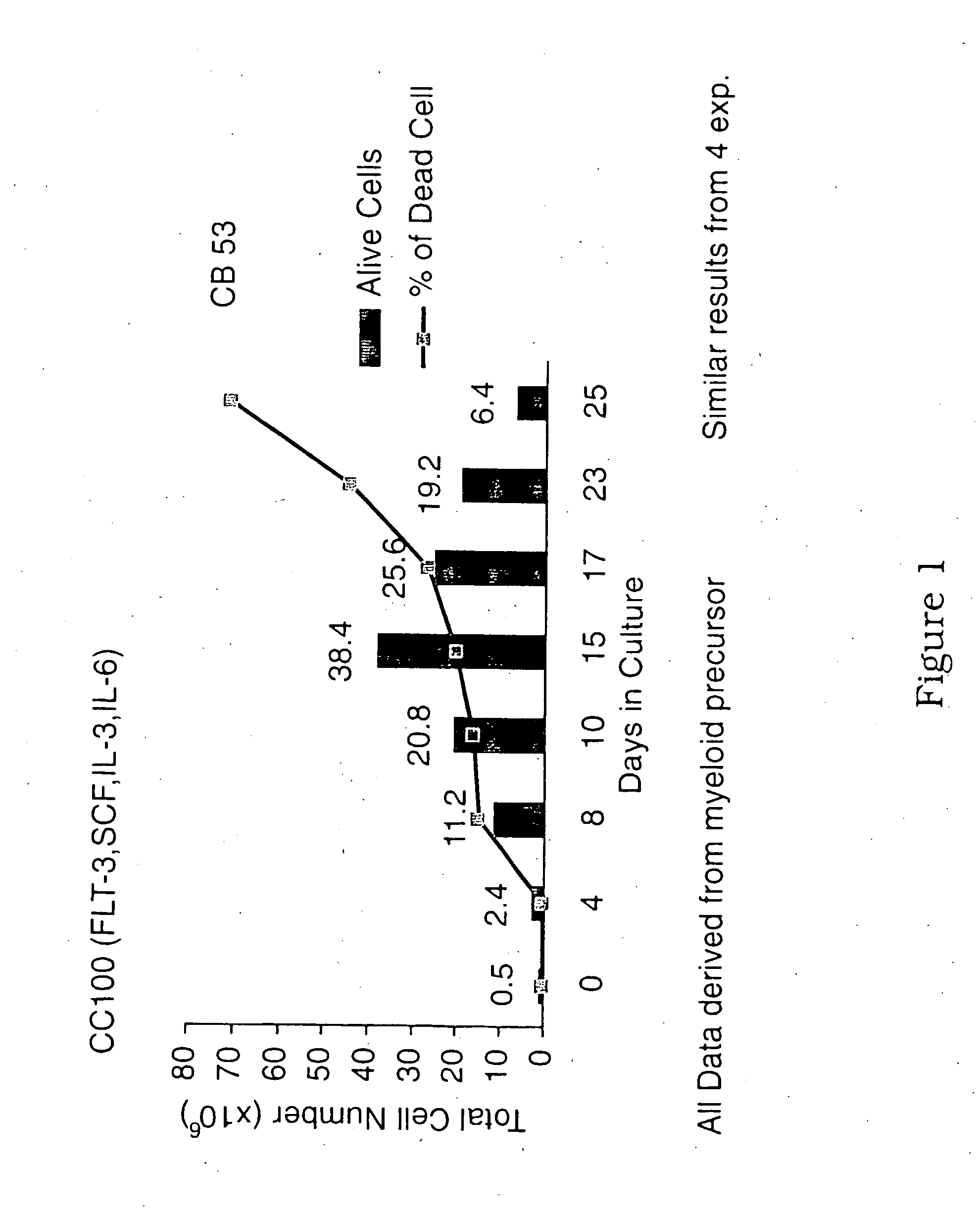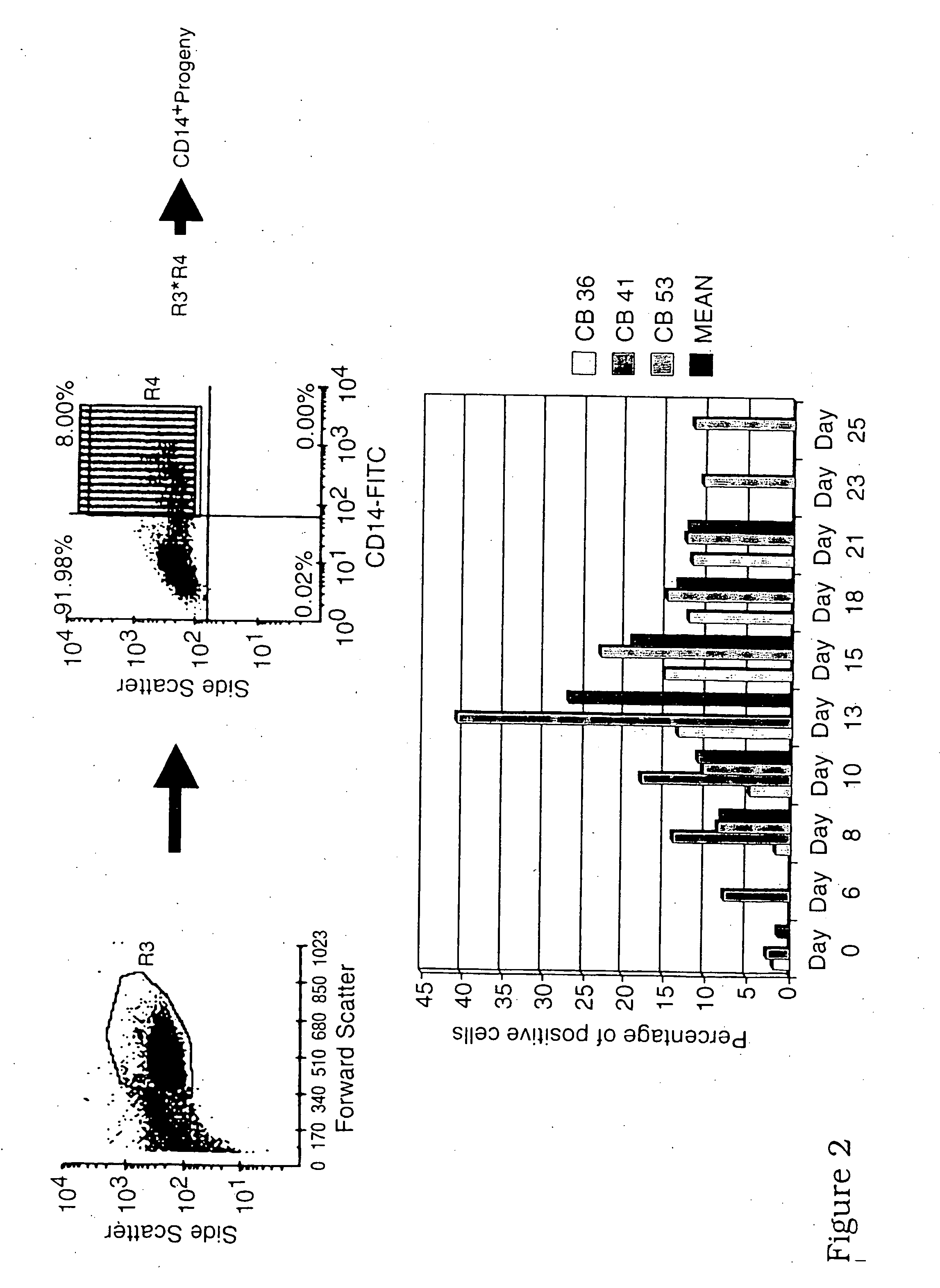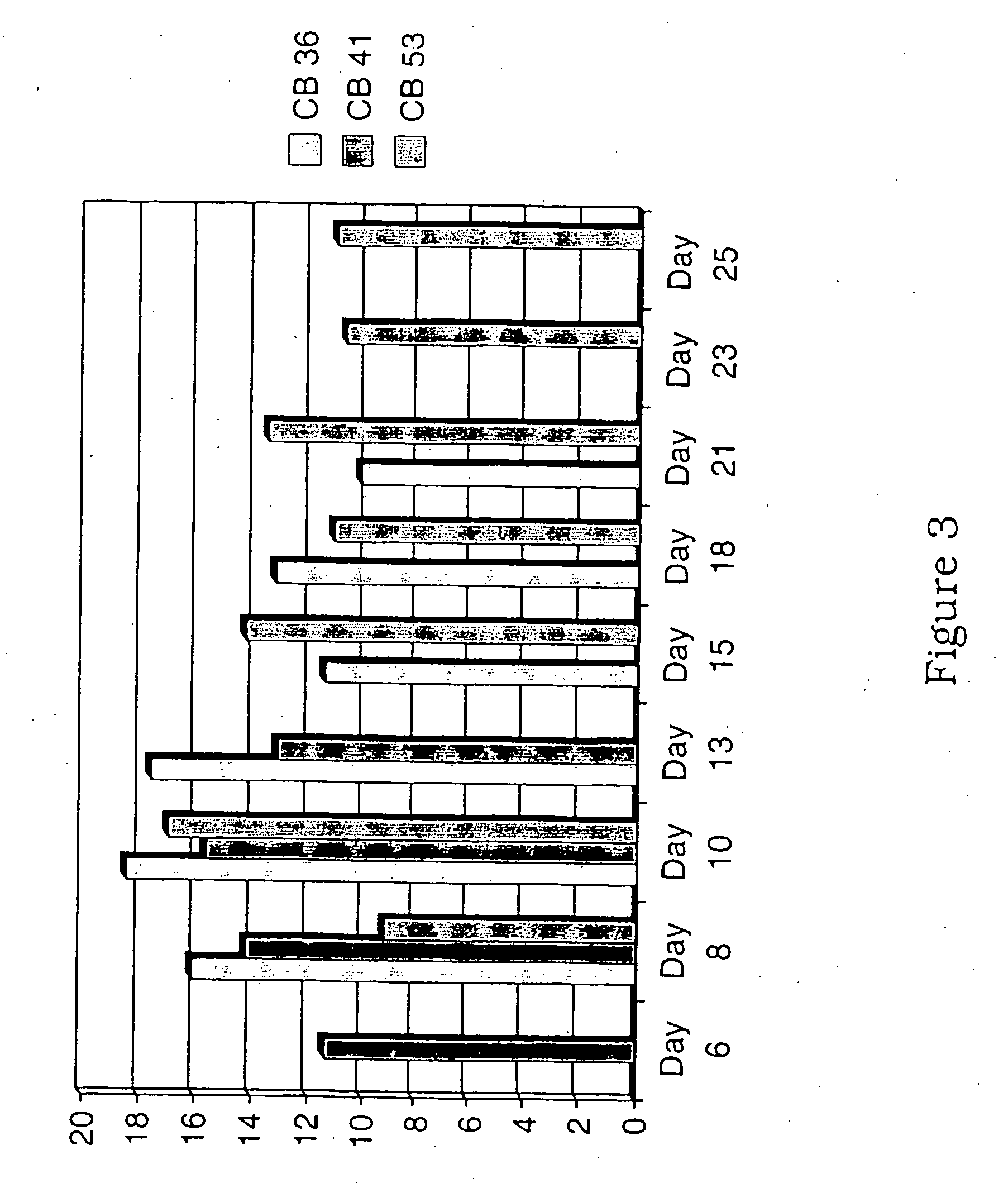Generation of dendritic cells from cd34+precursors
a technology of cd34+precursors and dendritic cells, which is applied in the direction of biocide, plant growth regulators, blood/immune system cells, etc., can solve problems such as difficult isolation, and achieve the effects of reducing the number of monocyte-derived dc, facilitating immunological tolerance or non-responsiveness, and modulating immunological responsiveness
- Summary
- Abstract
- Description
- Claims
- Application Information
AI Technical Summary
Benefits of technology
Problems solved by technology
Method used
Image
Examples
example 1
Generation of Myeloid-Like BDC
[0079] Sorted myeloid (CD33+CD7−CD10−) and lymphoid (CD34+CD33±CD7+CD10+) precursors from enriched cord blood CD34+ cells were cultured in 24-well plates (4−5×104 cells / ml) in H2000 serum free medium supplemented with a cocktail of cytokines (flt3-ligand 50 ng / ml, SCF 50 ng / ml, IL-3 10 ng / ml and IL-6 10 ng / ml) for 2-3 weeks. FIG. 1 shows the growth of cord blood CD34+ precursors in the presence of the cytokines. The progeny were assessed for phenotype on days 6-8 and every second day thereafter and also for their capacity to induce allogeneic T lymphocyte responses on days 8-12, of culture.
[0080] The presence of CD11c+ myeloid-like BDC in a CD14−CD15− population is shown in FIGS. 5A-E.
[0081]FIGS. 2-4 show the emergence of CD14+, CD15+ and CD14−CD15− populations and
[0082]FIG. 5 shows the emergency of CD11c+CD14−CD15− progeny.
[0083]FIG. 6 shows CD11c+HLA-D+CD123−CD1a− cells can induce a mixed lymphocyte reaction (MLR).
[0084] Peak CD34+ derived cell ...
example 2
Yield of CD34+, Myeloid / Lymphoid Precursors
[0085] The yield of CD34+, myeloid / lymphoid precursor is shown in Table 1.
TABLE 1MyeloidLymphoidSampleVolumeMNCCD34+precursorprecursorCB20 50 ml350 × 106 5.8 × 1060.6 × 1060.12 × 106CB53 50 ml300 × 106 4 × 1060.5 × 1060.02 × 106CB56 55 ml310 × 106 3.5 × 1060.3 × 1060.04 × 106CB30*—360 × 1061.8-2.5 × 106——
Purity CD34+ cells: >98%
*Pranke, Acta Haematologica 105: 71-76, 2001
PUM
| Property | Measurement | Unit |
|---|---|---|
| homogenous | aaaaa | aaaaa |
| cell surface | aaaaa | aaaaa |
| time | aaaaa | aaaaa |
Abstract
Description
Claims
Application Information
 Login to View More
Login to View More - R&D
- Intellectual Property
- Life Sciences
- Materials
- Tech Scout
- Unparalleled Data Quality
- Higher Quality Content
- 60% Fewer Hallucinations
Browse by: Latest US Patents, China's latest patents, Technical Efficacy Thesaurus, Application Domain, Technology Topic, Popular Technical Reports.
© 2025 PatSnap. All rights reserved.Legal|Privacy policy|Modern Slavery Act Transparency Statement|Sitemap|About US| Contact US: help@patsnap.com



